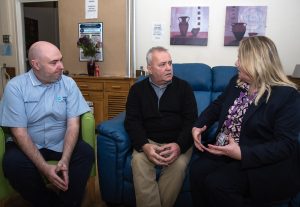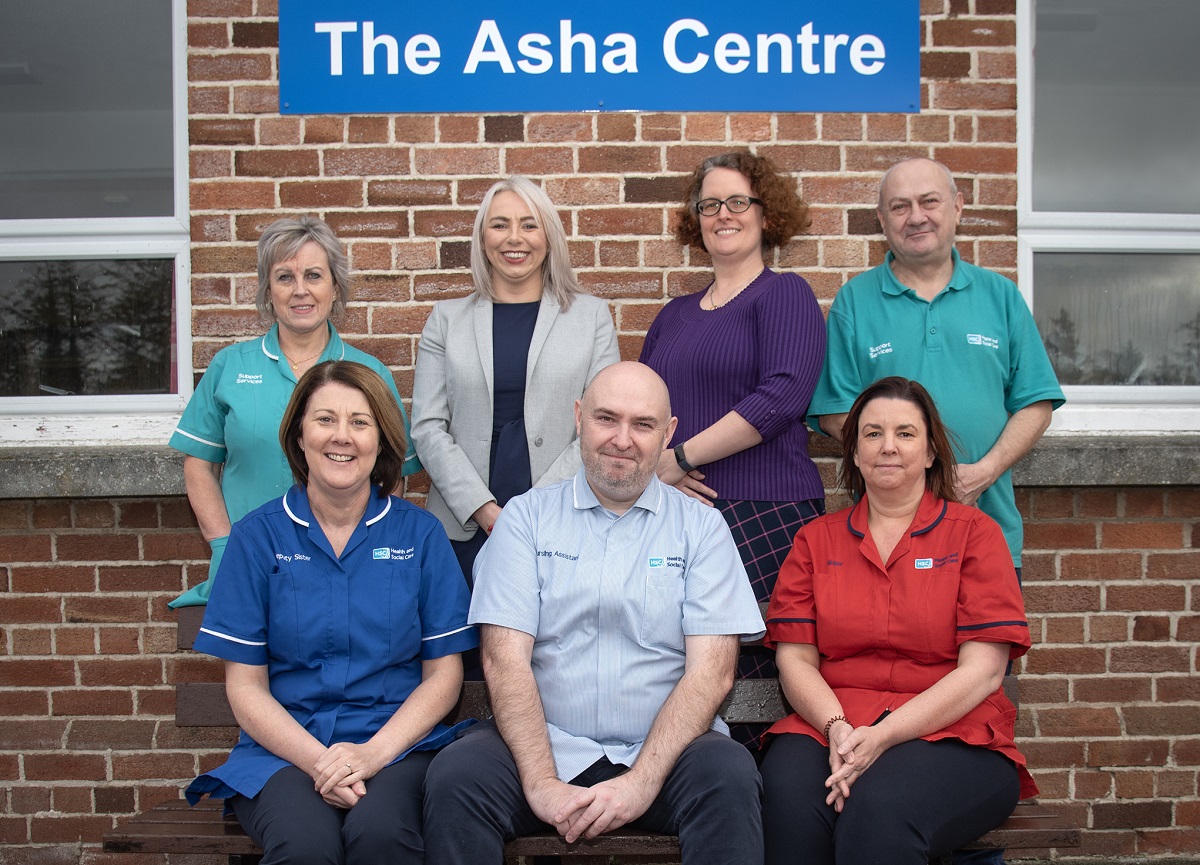The ASHA Centre, based at the Tyrone and Fermanagh Hospital, has been a vital support hub for those for those grappling with addiction in the Omagh region since its inception in 2016.
As an eight-bed in-patient unit, it’s one of three regional facilities within the Western Trust area, catering to individuals referred through the community addictions unit.
Patients – formally described as service users – can spend two to four weeks in ASHA, where they will be assessed and treated for addiction to substance misuse such as alcohol or drugs.

The programme in ASHA concentrates around group work and one-to-one intervention focusing on motivational change.
All service users attend regular support meetings and engage in gentle exercise and alternative therapy such as art and creative writing or yoga.
Currently, the ASHA Centre has a waiting list of some 23 people.
However, there is satisfaction in the fact that 22 of them have pre-arranged dates for admission.
The centre is staffed by a team of mental health nurses, support workers, a ward manager, medical staff, a consultant psychiatrist social worker and psychologist.
Ward manager, Imelda McNabb sheds light on ASHA’s ethos, stating, “Our ambiance at ASHA is very important…
“Most people who come here are from a background of addiction where their lives can be very chaotic.
“So we try and create a calming atmosphere.”

This ambiance serves as a bedrock for a structured programme that harmoniously blends group work and individual interventions, all aimed at instigating motivational change.
“When someone arrives, we photograph them with their permission,” continued Imelda.
“Then we take another photo when their stay here ends, and the change in the service user is usually quite amazing.
“This transformation is due to the hard work of the staff and also the service users themselves.”
Yet, as the landscape of addiction evolves, so do the intricacies of cases that ASHA encounters.
Imelda reflects on these complexities, noting, “We work primarily with people who have alcohol and drug addictions.
“But now, with mental health, people are also being admitted with morbid mood and other mental health difficulties.”
One of the first treatments is detoxification.

Then, when an element of stabilisation has been established, the service users participate in group work which focuses on the addiction.
This helps them acknowledge the difficulties that they have in life, what has led them to this point, before identifying means of how things can be done differently.
Central to the rehabilitation process is engagement with families on how their relatives are progressing prior to discharge from the centre.
As Imelda explains, “The discharge planning takes place with the family and the key workers…
“It’s great for the families to not just come and hear about the treatments, but also to ask questions and get the information about what happens when the service user returns home.
“It’s also about planning for the support and care which will be required from the voluntary and statutory sectors when someone leaves here.”
Deputy Sister, Kerry Mellon, further underscores the pivotal role of former service users in shaping ASHA’s approach.

“There is a very dedicated and active group of service users here at ASHA… They meet regularly with staff and bring forward ideas about how things could be done differently,” she observes.
Despite external challenges, such as ASHA’s services being stopped at the start the Covid-19 pandemic in 2020, the centre is now making a real difference to the lives of its service users.
Through its holistic, adaptable approach and collaborative ethos, ASHA continues to instill hope and foster resilience in countless individuals within Omagh and the broader community.







